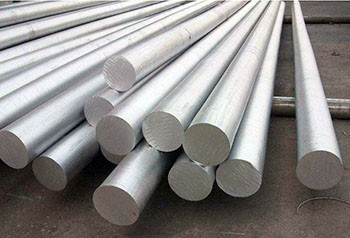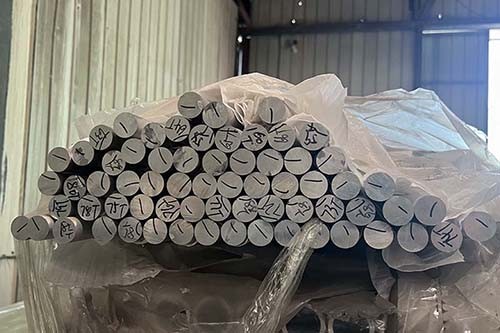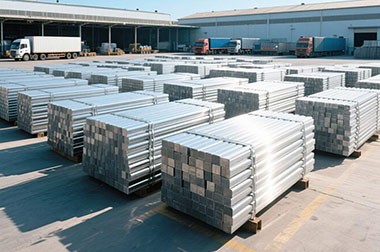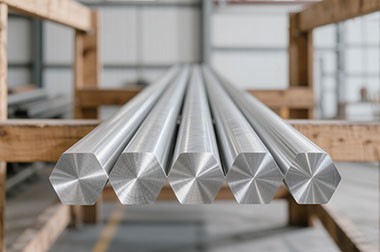5754 Marine Grade Aluminum Plate Sheet
As a typical aluminum-magnesium alloy material, 5754 aluminum plate demonstrates significant advantages in marine environments due to its excellent corrosion resistance, weldability, and medium strength.
Marine-grade 5754 aluminum plate is stronger than 5251. This higher strength makes 5754 especially suitable for ship applications requiring both strength and seawater corrosion resistance.
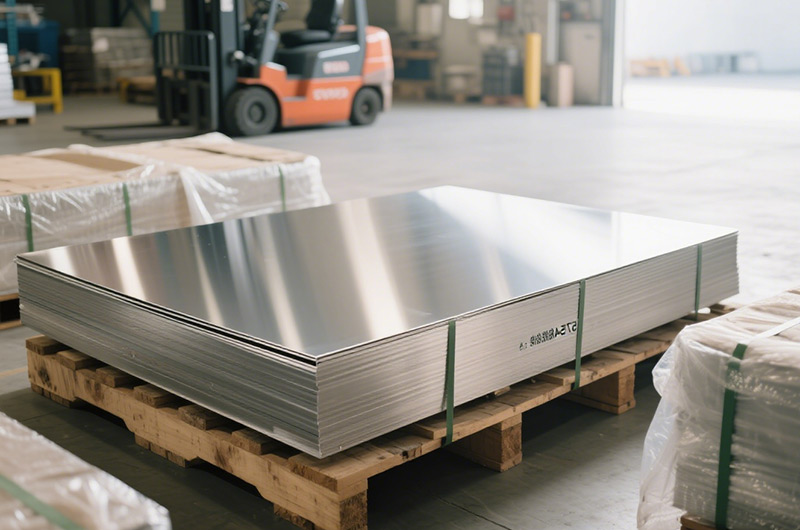
Marine-grade 5754 aluminum plates have been certified by CCS, DNV, ABS, BV, LR, KR, and other classification societies.
Specifications of 5754 Aluminum Plate in Shipbuilding
In the shipbuilding industry, 5754 aluminum plates are widely used in various ship structures, including hulls, decks, ship interiors, and fuel tanks. Depending on the location and functional requirements, the 5754 aluminum plates used in shipbuilding mainly have the following specifications:
Specifications of 5754 Aluminum Plate for Different Ship Parts
| Application Area | Common Thickness (mm) | Temper | Features |
| Hull Structure | 6-50 | H111, H112 | High strength and good workability |
| Deck | 8-30 | H32, H34 | High wear resistance and impact resistance |
| Ship Interior | 1-6 | O temper, H22 | Good formability and surface quality |
| Fuel Tanks and Liquid Containers | 3-12 | H321, H112 | Excellent corrosion resistance and weldability |
Common Tempers and Characteristics of 5754 Aluminum Plate
The commonly used tempers of 5754 aluminum plate in shipbuilding mainly include the following, each offering different properties and suitable application scenarios:
| Temper | Features | Application Scenario |
| 5754 O | Lowest strength and highest ductility | Complex-formed ship interiors and structural parts |
| 5754 H111 | Medium strength and good formability | Hull structural components with moderate strength requirements |
| 5754 H112 | Good overall performance | Hull outer shell and main support structures |
| 5754 H32 | Medium strength and good fatigue resistance | Ship decks and structures under alternating loads |
| 5754 H34 | Higher strength and hardness | Ship structures requiring higher strength |
| 5754 H321 | Higher strength and dimensional stability | Ship structures with high dimensional accuracy requirements |
Key Properties of 5754 Aluminum Plate
Corrosion Resistance: Excellent Performance in Marine Environments
5754 aluminum plate demonstrates excellent corrosion resistance in marine environments, particularly with strong resistance to seawater and industrially polluted environments. This property is mainly attributed to the addition of magnesium in its Al-Mg alloy system, with a magnesium content of 2.6%-3.6%, forming a dense oxide film that effectively prevents seawater and salt spray from corroding the base material.
In practical ship applications, the corrosion resistance of 5754 aluminum plate can be further enhanced by the following methods:
- Surface anodizing treatment to form a thicker and denser oxide layer
- Coating with anti-corrosion coatings such as epoxy resin or polyurethane paint
- Using cathodic protection measures, such as installing zinc blocks or sacrificial anodes
Strength Characteristics: A Balance Between Medium Strength and Lightweight
5754 aluminum plate is classified as a medium-strength aluminum alloy. Although its strength is not as high as that of high-strength 2xxx or 7xxx series alloys, it is sufficient to meet the load-bearing requirements of most structural components in shipbuilding.
Compared with other commonly used shipbuilding materials, the strength performance of 5754 aluminum plate is as follows:
- Compared with pure aluminum (1000 series), 5754 has significantly higher strength—approximately 1.5 to 2 times stronger.
- Compared with 5052 aluminum alloy, 5754 has a higher magnesium content and slightly higher strength, with tensile strength about 10–15% higher.
- Compared with 5083 aluminum alloy, 5754 has slightly lower strength, though the gap is small. 5083 has a tensile strength of approximately 275–325 MPa.
- Compared with 6061 aluminum alloy, 5754 has slightly lower strength, but the strength range of 6061 varies significantly.
Welding Performance: A Key Advantage in Shipbuilding
The excellent welding performance of 5754 aluminum plate is one of the main reasons for its wide application in shipbuilding. Compared with other aluminum alloys, 5754 offers excellent weldability and can achieve high-quality welds through various welding methods.
- Welding Methods: TIG, MIG, laser welding, etc.
- Weld Strength: Up to 82.28% of the base metal
- Crack Sensitivity: Low sensitivity to hot cracking
- Post-Weld Treatment: No need for annealing to restore corrosion resistance
Workability: Convenience in Forming and Processing
5754 aluminum plate has good workability and can be formed into complex shapes using various processing methods to meet the diverse needs of shipbuilding. Its workability is reflected in cold workability, hot workability, machinability, and surface treatment properties.
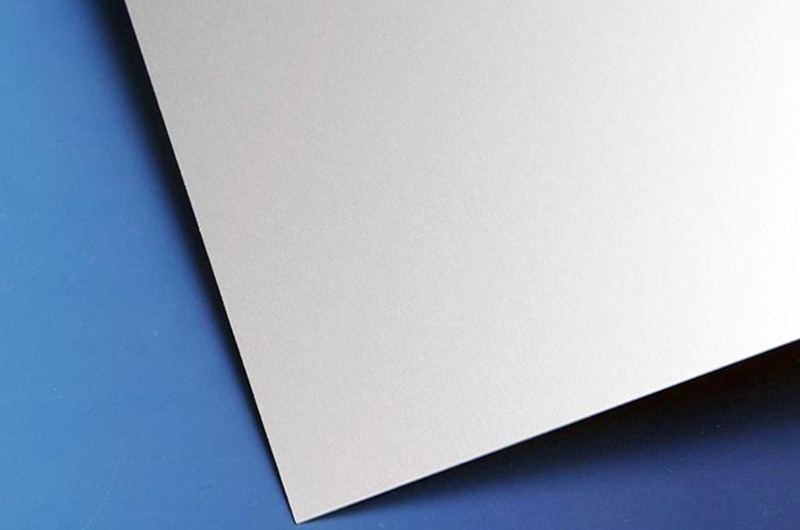
Comparative Analysis of Marine-Grade 5754 Aluminum Plate and Other Materials
Performance Comparison with Other Aluminum Alloys
In the shipbuilding field, besides 5754 aluminum plate, other commonly used aluminum alloys include 5052, 5083, 5086, 6061, and 6082. 5754 aluminum plate has both advantages and disadvantages in terms of strength, corrosion resistance, weldability, and workability when compared to these alloys.
- Compared with 5052, 5754 has better strength and corrosion resistance, making it more suitable for critical structural parts.
- Compared with 5083, 5754 is more cost-effective and easier to process, suitable for most ship structures.
- Compared with 6061 and 6082, 5754 offers better corrosion resistance and weldability, making it more suitable for marine environments.
- Corrosion resistance ranking (marine environment): 5754 > 5083 > 5052 > 6082 > 6061
- Strength ranking: 5083 > 6082 ≈ 6061 > 5754 > 5052
- Cost-effectiveness: 5052/5754 offer high value for money; 5083 is significantly more expensive
- Welding convenience: 5754 (no post-weld treatment) > 5052 > 5083 (requires annealing) > 6082/6061
Recommended Applications:
- 5754: Ship structures requiring a balance between corrosion resistance and strength.
- 5083: High-strength demands in extreme environments (warships/submarines).
- 5052: Light-load, cost-sensitive components.
- 6082/6061: High-strength mechanical parts (requiring heat treatment).
Comparison Between 5754 and 5052 Aluminum Alloys
| Characteristic | 5754 Aluminum Alloy | 5052 Aluminum Alloy |
| Chemical Composition | Higher magnesium content, slightly more manganese | Lower magnesium content, slightly less manganese |
| Strength Performance | 10–15% higher tensile strength | Lower strength |
| Corrosion Resistance | Better (especially for long-term salt spray exposure) | Good, but inferior to 5754 |
| Weldability | Higher weld strength | Good, but slightly lower weld strength |
| Workability | Slightly weaker cold workability | Better cold workability (suitable for large deformation processing) |
| Application Fields | Medium-load structures, critical components | Light-load structures, non-critical components |
Comparison Between 5754 and 5083 Aluminum Alloys
| Characteristic | 5754 Aluminum Alloy | 5083 Aluminum Alloy |
| Chemical Composition | Lower magnesium content | Significantly higher magnesium content and more manganese |
| Strength Performance | 30–40% lower tensile strength | 275–325 MPa tensile strength (higher) |
| Corrosion Resistance | Excellent, but inferior to 5083 | Superior (especially in seawater/salt spray environments) |
| Weldability | No annealing needed after welding | Requires annealing to restore corrosion resistance after welding |
| Workability | Easier cold forming | More difficult cold forming |
| Cost Comparison | Lower | 20–30% more expensive |
| Application Fields | General ship structures | High-demand scenarios (warships, submarines, critical parts of commercial ships) |
Comparison Between 5754 and 6082 Aluminum Alloys
| Characteristic | 5754 Aluminum Alloy | 6082 Aluminum Alloy |
| Chemical Composition | Higher magnesium content, low silicon content | Lower magnesium content, higher silicon content (Al-Mg-Si series) |
| Strength Performance | Lower | Higher (T6 condition: 260–310 MPa) |
| Corrosion Resistance | Better (especially in marine environments) | Weaker |
| Weldability | Higher weld quality | Slightly weaker weldability |
| Workability | Weaker hot workability | Better hot workability (suitable for extrusion/hot forming) |
| Application Fields | High-corrosion-resistant ship structures | High-strength application scenarios (ship structures, mechanical parts) |
Comparison Between 5754 and 6061 Aluminum Alloys
| Characteristic | 5754 Aluminum Alloy | 6061 Aluminum Alloy |
| Chemical Composition | High magnesium content, no copper | Lower silicon/magnesium content, contains copper (Al-Mg-Si series) |
| Strength Performance | Lower | Higher (T6 condition: 240–310 MPa) |
| Corrosion Resistance | Significantly better (especially in seawater environments) | Weaker |
| Weldability | High weld strength, low crack sensitivity | Slightly weaker weldability |
| Workability | Better cold workability, weaker machinability | Better machinability, slightly weaker cold workability |
| Heat Treatment Characteristics | Non-heat-treatable | Heat-treatable (significant strength increase in T6) |
| Application Fields | High-corrosion-resistant ship structures | High-strength applications (ship masts, mechanical parts) |
Comparison with Steel
In shipbuilding, steel is another commonly used material, especially high-strength steel and stainless steel. Compared to steel, 5754 aluminum plate has significant advantages in terms of weight, corrosion resistance, and processability, though it is slightly inferior in strength and high-temperature resistance.
- Density Aluminum is approximately 60% lighter than steel
- Corrosion Resistance Aluminum is significantly better than ordinary carbon steel
- Processability Aluminum is easier to process and requires less energy
- Recyclability Recycled aluminum requires only 5% of the energy needed to produce primary aluminum
Comparison with Composite Materials
In recent years, composite materials such as fiberglass reinforced plastic (FRP) and carbon fiber reinforced plastic (CFRP) have become increasingly used in shipbuilding. Compared with these composite materials, 5754 aluminum plate has advantages in fire resistance, repairability, and recyclability, while composites perform better in weight and design flexibility.
Applications of 5754 Aluminum Plate in the Marine Field
Typical Applications in Shipbuilding
5754 aluminum plate is widely used in shipbuilding, covering a range of vessel types from large commercial ships to small yachts. The following are typical applications of 5754 aluminum plate in shipbuilding:
- Hull Structures: 6–50 mm thick H111 or H112 plates for hull shells and main supporting structures
- Decks and Superstructures: 8–30 mm thick H32 or H34 plates with higher hardness and strength
- Interior Fittings: 1–6 mm thick O-temper or H22 plates with good formability and surface quality
- Fuel and Liquid Tanks: 3–12 mm thick H321 or H112 plates for ensuring sealing and long-term reliability
Hull Structures
5754 aluminum plate is an ideal material for hull shells and main supporting structures.
- In large ships, 6–50 mm thick 5754-H111 or 5754-H112 aluminum plates are typically used for hull shells. These conditions offer good strength and workability.
- In medium and small ships, thinner plates such as 4–20 mm 5754-H32 or 5754-H34 aluminum plates may be used.
The lightweight nature of 5754 aluminum helps reduce hull weight, increase speed, and improve fuel efficiency. At the same time, its excellent corrosion resistance lowers maintenance costs and extends vessel service life.
Decks and Superstructures
Decks and superstructures of ships typically use 8–30 mm thick 5754-H32 or 5754-H34 aluminum plates. These plates are cold work hardened to achieve higher hardness and strength to support foot traffic and equipment weight. Deck plates are often treated with anti-slip surfaces, such as embossing or sandblasting, to enhance safety. Using 5754 aluminum for superstructures helps lower the vessel's center of gravity and improve navigational stability.
Interior Fittings
Ship interiors and partitions often use 1–6 mm thick 5754-O or 5754-H22 aluminum plates. These tempers offer excellent formability and surface quality, making them easy to form into various shapes. The lightweight nature of 5754 aluminum helps reduce overall vessel weight, and its corrosion resistance resists the effects of humid environments. Interior aluminum plates are typically anodized or coated to improve aesthetics and corrosion resistance.
Fuel and Liquid Tanks
Fuel tanks and freshwater compartments often use 3–12 mm thick 5754-H321 or 5754-H112 aluminum plates. These materials offer excellent corrosion resistance and weldability, ensuring sealed and long-term reliable liquid containment. 5754 aluminum is highly resistant to corrosion from fuel and fresh water, reducing contamination risks. Additionally, the material's lightweight nature helps reduce tank weight and increase vessel payload capacity.
Ship Piping Systems
5754 aluminum plate can also be used for ship piping systems, such as seawater cooling pipes and ventilation ducts. Aluminum piping is lightweight, corrosion-resistant, and easy to install. Compared to traditional steel pipes, aluminum pipes require no anti-corrosion treatments and have lower maintenance costs.
Ship Doors, Windows, and Decorative Parts
Frames and decorative parts of ship doors and windows are often made of 5754 aluminum plate. These components typically use 2–6 mm thick 5754-H32 or 5754-H34 aluminum plates, offering good strength and decorative appeal. 5754 aluminum can be anodized or coated in various colors to meet vessel aesthetic design requirements.
Ship Accessories and Equipment
5754 aluminum plate can also be used to manufacture various ship accessories and equipment, such as ladders, railings, vents, and hatch covers. These parts typically use 3–10 mm thick 5754-H32 or 5754-H34 aluminum plates and offer excellent strength and corrosion resistance.
In shipbuilding, the applications of 5754 aluminum plate are not limited to the above parts. It can also be custom-designed for specific needs. For example, components of propulsion systems or deck machinery bases in some ships can also be made from 5754 aluminum plate.
Other Applications in Marine Engineering
In addition to shipbuilding, 5754 aluminum plate also sees wide use in marine engineering fields, including offshore platform structures, ocean observation equipment, seawater desalination units, marine aquaculture facilities, coastal defense projects, port infrastructure, and marine energy systems.
More Informations About 5754 Aluminum Plate
5754 Marine Grade Aluminum Plate Sheet product details
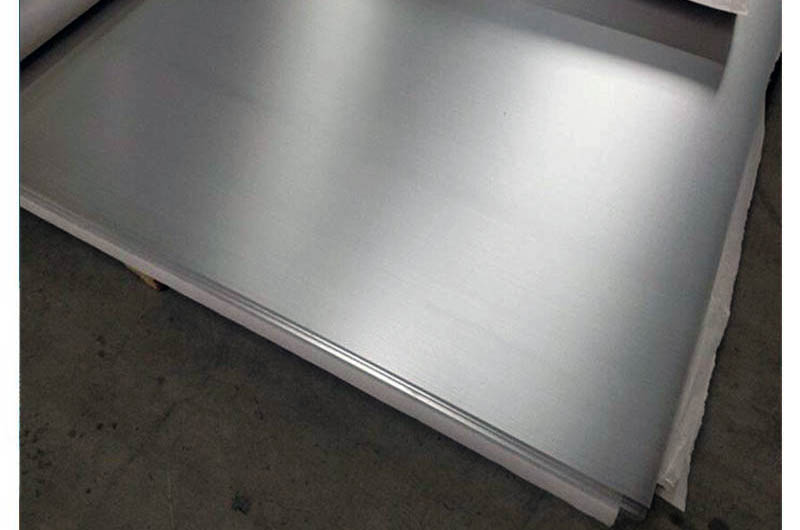
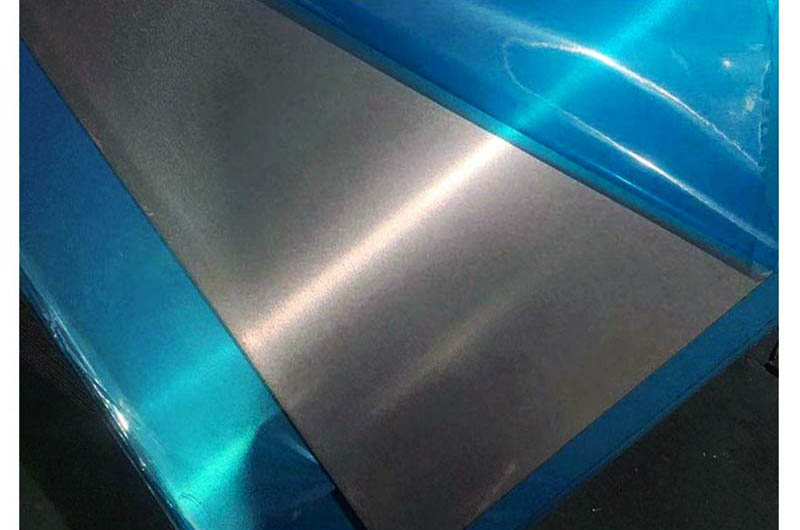
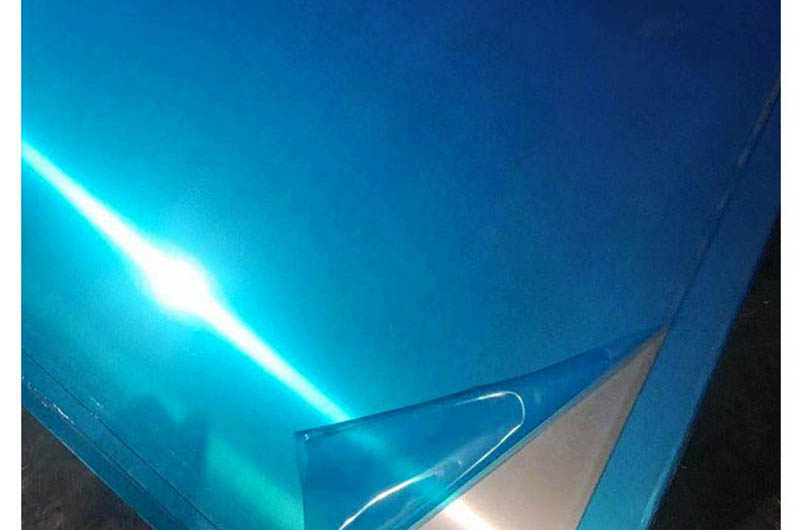
Chemical composition of 5754 Marine Grade Aluminum Plate Sheet
| Element | Composition(%) |
| Manganese (Mn) | ≤0.50 |
| Iron (Fe) | ≤0.40 |
| Magnesium (Mg) | 2.60-3.60 |
| Silicon (Si) | ≤0.40 |
| Copper (Cu) | ≤0.10 |
| Chromium (Cr) | ≤0.30 |
| Zinc (Zn) | ≤0.20 |
| Titanium (Ti) | ≤0.15 |
| Mangenese + Chromium (Mn + Cr) | 0.10-0.60 |
| Aluminium (Al) | Remainder |
Mechanical properties of 5754 marine grade aluminum plate
| Alloy | Temper | Thickness mm | Tension strength RmMPa | Specified non-proportional elongation strength Rp0.2 Mpa | Elongation % | |
| A50 mm | A | |||||
| 5754 | O | 3.00-50.00 | 190-240 | ≥80 | ≥18 | ≥17 |
| H111 | 3.00-50.00 | 190-240 | ≥80 | ≥18 | ≥17 | |
| H22, H32 | 3.00-6.00 | 220-270 | ≥130 | ≥11 | - | |
| H112 | 6.00-12.50 | ≥190 | ≥100 | ≥12 | - | |
| >12.50-25.00 | ≥190 | ≥90 | - | ≥10 | ||
| >25.00-50.00 | ≥190 | ≥80 | - | ≥12 | ||
5754 Marine Grade Aluminum Plate Sheet General Physical Properties
| Density | 2.66 g/cm³ |
| Melting Point | 600 °C |
| Thermal Expansion | 24 x 10^-6 /K |
| Modulus of Elasticity | 68 GPa |
| Thermal Conductivity | 147 W/m.K |
| Electrical Resistivity | 0.049 x 10^-6 Ω .m |
Why choose 5754 for marine grade aluminum plate?
- Corrosion resistance: One of the major issues in marine environments is corrosion, as exposure to salt water rapidly degrades metals. 5754 aluminum has excellent corrosion resistance, especially in marine atmospheres, making it ideal for ships and other marine structures.
- Strength and durability: 5754 aluminum offers a good balance between strength and durability. It has good mechanical properties, including moderate to high tensile strength and good formability, allowing it to withstand the harsh conditions encountered in marine environments without sacrificing structural integrity.
- Weldability: The weldability of 5754 aluminum is another advantageous feature for marine applications. It can be easily welded using various methods, such as MIG or TIG welding, allowing for efficient fabrication and repair of marine structures.
- Resistance to Stress Corrosion Cracking: Stress corrosion cracking (SCC) is a particular concern in marine environments because metals are subjected to both corrosive conditions and mechanical stress. 5754 aluminum is resistant to stress corrosion cracking, increasing the reliability and service life of marine structures.
- Lightweight: Although 5754 is not the lightest aluminum alloy, it has a good strength-to-weight ratio. Its relatively low density helps reduce the weight of marine structures, thereby improving the vessel's fuel efficiency and overall performance.
- Formability: The alloy has good formability and can be easily formed into various shapes and sizes to meet the specific requirements of ship construction and manufacturing.
- Surface Treatment: 5754 aluminum can be given different surface treatments, such as anodizing, painting or powder coating, to enhance its appearance and provide additional protection against corrosion.
- Heat treatable: While 5754 aluminum is generally not heat treatable, it can be hardened through cold working processes such as rolling or extrusion, which further enhances its mechanical properties.
- Cost Effective: Compared to some other marine grade aluminum alloys, 5754 is generally more cost effective while still providing excellent performance in marine environments. This makes it an attractive choice for a variety of marine applications, including hulls, decks and other structural components.
Overall, the combination of corrosion resistance, strength, weldability, and other beneficial properties make 5754 aluminum a popular choice for marine-grade aluminum plate, effectively meeting the demanding requirements of marine applications.
Recommended for you
-
5754 aluminum sheet is a non-heat-treatable alloy in the 5xxx series, with magnesium as its main alloying element. It is well-known for its excellent corrosion resistance, high strength, and good weldability, making it suitable for a wide range of industrial applications.
-
AW 5754 H111 refers to a specific aluminum-magnesium alloy in the 5000 series, known for its excellent corrosion resistance, medium strength, and good weldability.
Other content readers are interested in
-
5456 5454 5754 Marine Grade Aluminum Bar
5456 5454 5754 Marine Grade Aluminum Bar has certification from CCS, DNV, NK, CCS, ABS, BV, LR, KR and other classification societies, and its quality fully complies with world marine grade standards.
-
Marine Grade Aluminum Round Bar 5754 5454 5456
The quality of 5754, 5456, and 5454 marine-grade aluminum round bars fully meets the ship classification standards worldwide: CCS, DNV, NK, ABS, BV, LR, KR.
-
5456 5454 5754 Marine Grade Aluminum Square Bars
As outstanding representatives of the Al-Mg series alloys, 5456, 5454, and 5754 marine-grade aluminum square bars each have unique performance advantages and application scenarios.
-
5454 5456 5754 Marine Grade Hexagonal Aluminum Bar
Haomei Aluminum is one of the leading 5454, 5456, 5754 aluminum hexagonal bar manufacturers in China, focusing on the research and development and production of high-quality products.
Recommended for you
-
5052 marine aluminum alloy is a high-strength, corrosion-resistant, easy-to-process and weld aluminum alloy, which is widely used in the manufacture of ships and marine structures.
-
5083 is basically used to manufacture ship hulls because of its relatively high strength and good corrosion resistance.
-
5059 aluminum is both a high-magnesium and high-zinc alloy, offering excellent corrosion resistance and fire resistance.
-
5086 aluminum alloy is irreplaceable in hull and deck applications in marine operating environments due to its unique seawater corrosion resistance, excellent low-temperature toughness, and good weldability.
-
5383 aluminum offers excellent fatigue resistance and crack resistance, and its unique properties make it irreplaceable in the design of high-speed vessels and marine structures that require long-term fatigue resistance.
-
5456 aluminum, with its unique high strength, exceptional fatigue resistance, and resistance to stress corrosion cracking, is irreplaceable in heavy-duty hull structures.
-
5754 aluminum is a medium-to-high strength alloy with excellent weldability, a low tendency for welding cracks, and high strength in both the weld joint and the crystalline metal.
More content of interest to readers
5049-H24 Aluminum vs. 5754-H24 Aluminum 5754-H14 Aluminum vs. 5754-H22 Aluminum 5754-H22 Aluminum vs. 5754-H32 Aluminum 5754-H28 Aluminum vs. 5754-O Aluminum
You might be interested in: Marine Aluminum 5754

